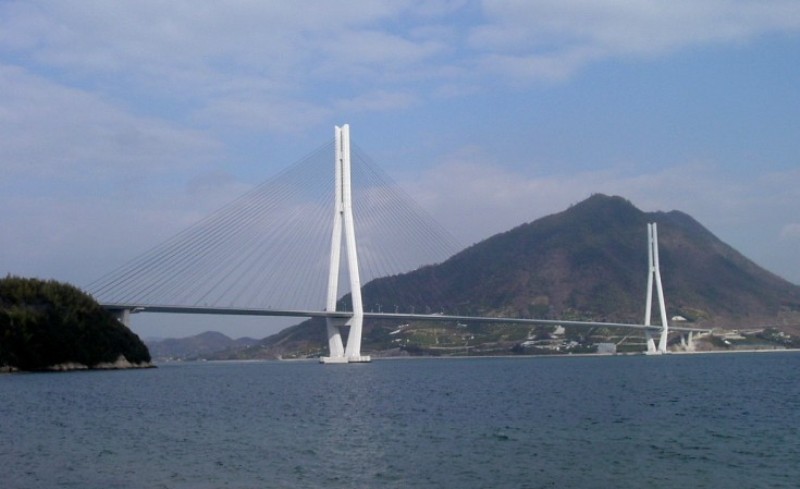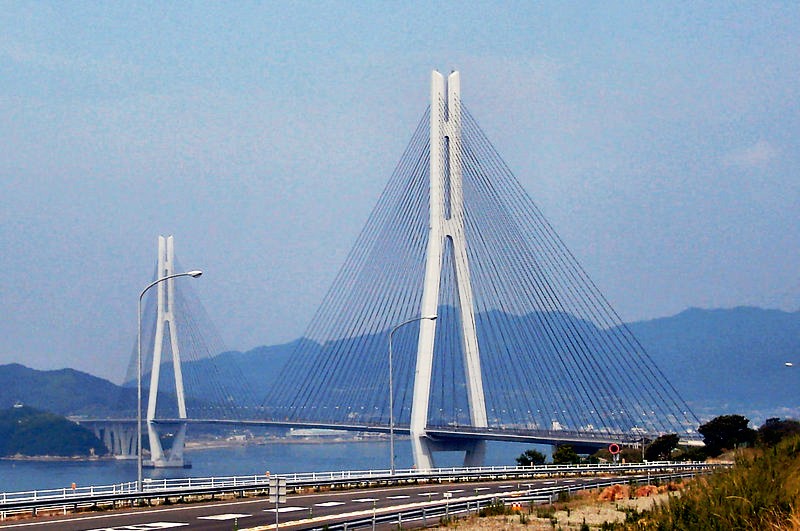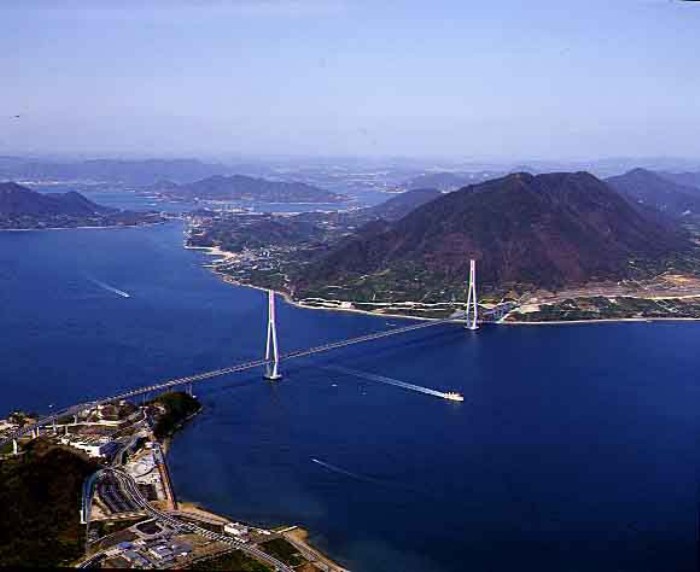| |||||||
Europe
North AmericaSouth AmericaAsiaAustralia and OceaniaAfrica |
Смотрите также: Tatara Bridge The Tatara Bridge is a cable-stayed bridge that is part of the Nishiseto Expressway, commonly known as the Shimanami Kaido. As of 2008 it has the second longest main span of any cable-stayed bridge after the Sutong Bridge. The expressway is a series of roads and bridges that is one of the three routes of the Honshu-Shikoku Bridge Project connecting the islands of Honshu and Shikoku across the Seto Inland Sea in Japan. The Kurushima-Kaikyo Bridge is on the same route.
Tatara Bridge Carries 4 lanes of roadway, bicycle/pedestrian lanes Crosses Seto Inland Sea Locale Hiroshima and Ehime Prefectures Design Cable-stayed bridge Total length 1,480 metres (4,856 ft) Width 30.6 metres (100 ft) Longest span 890 metres (2,920 ft) Clearance below 26 metres (85 ft) Opening date May 1, 1989
The bridge, which opened on May 1, 1999, carries two lanes of traffic in each direction and has additional lanes for bicycles, motor bikes, and pedestrians.
The Tatara Bridge was originally planned as a suspension bridge in 1973. In 1989 the design was changed to a cable-stayed bridge with the same span. By building a cable-stayed bridge a large excavation for an anchorage would not be needed, thereby lessening the environmental impact on the surrounding area. The steel towers are 220 metres (722 ft) high and shaped like an inverted Y. The side-spans are 164.5 metres (540 ft) and 257.5 metres (845 ft) respectively, and there are also three very small cable spans.
Construction of the bridge took a little more than six years and was accomplished without any accidents. Many technological advancements were part of the design and testing of the bridge. Comments: 0 |
|
|||||










































